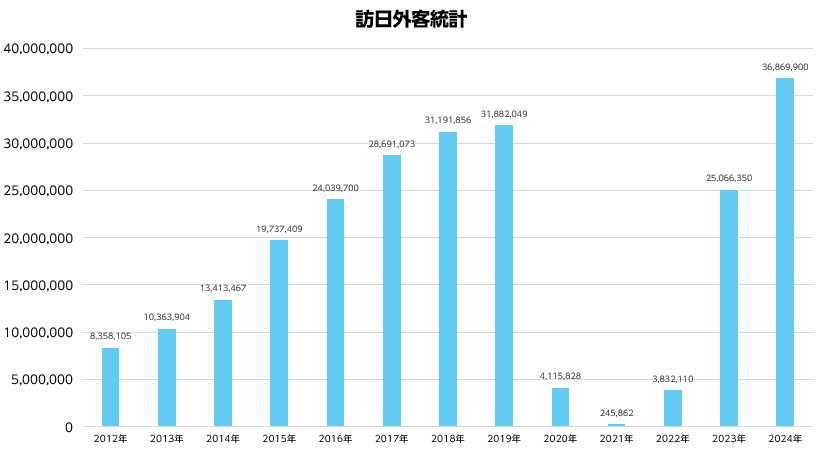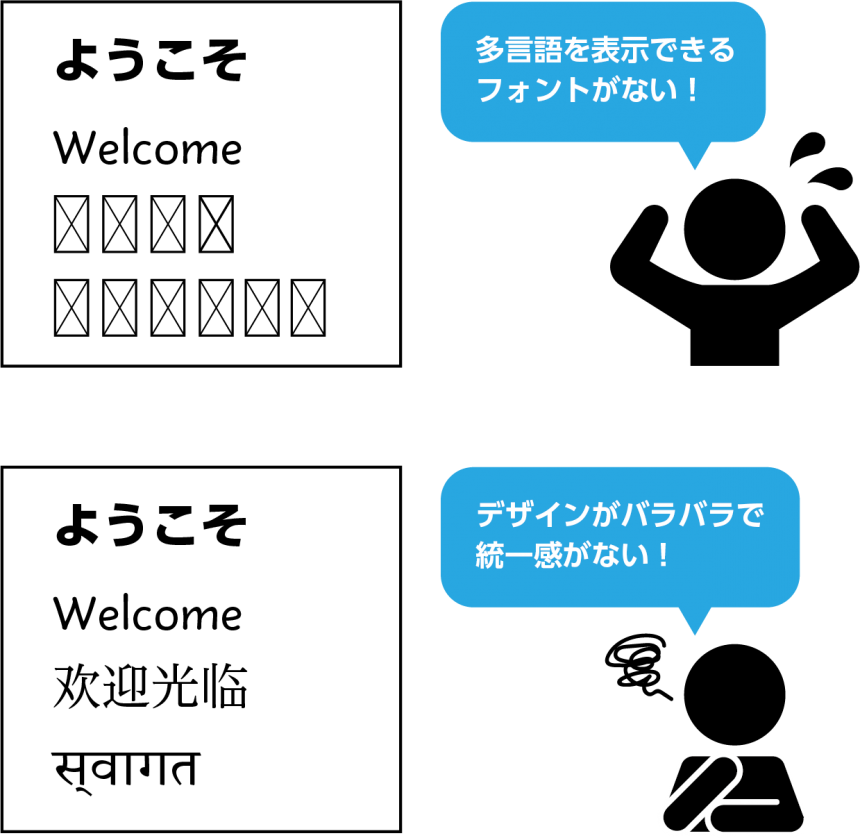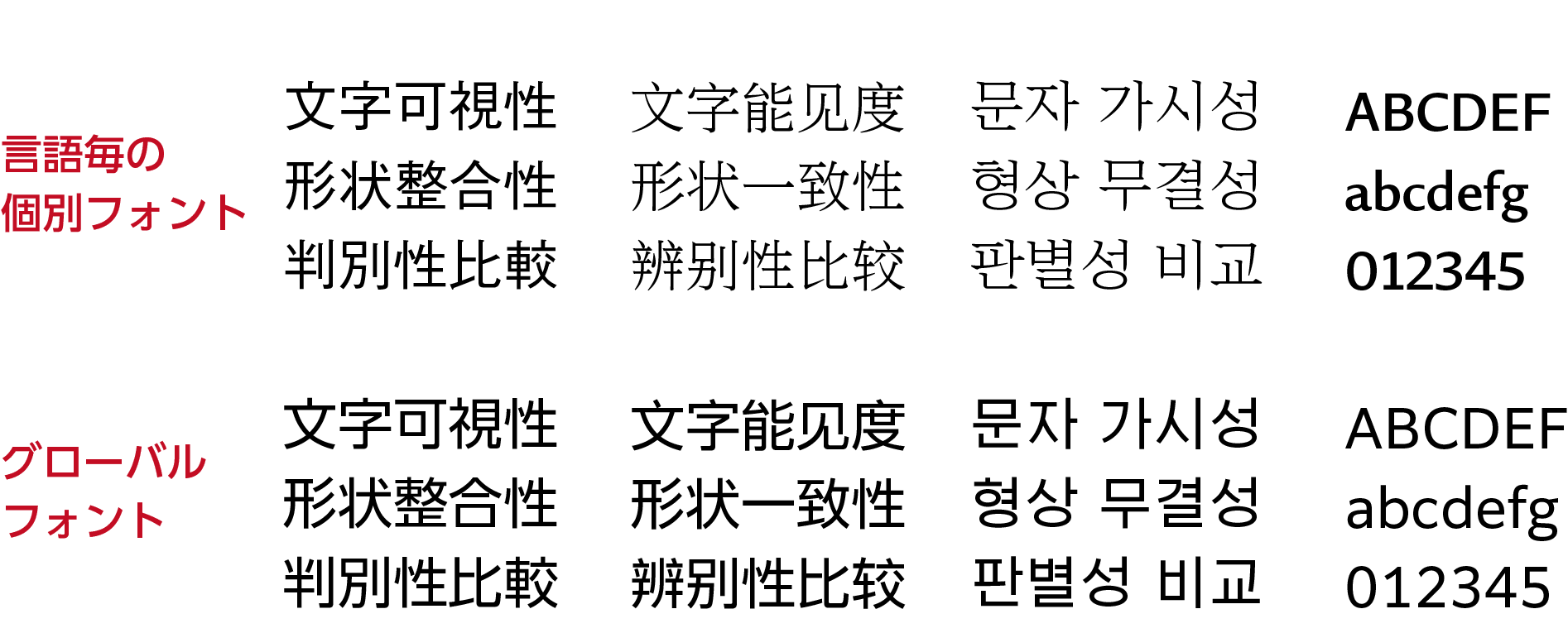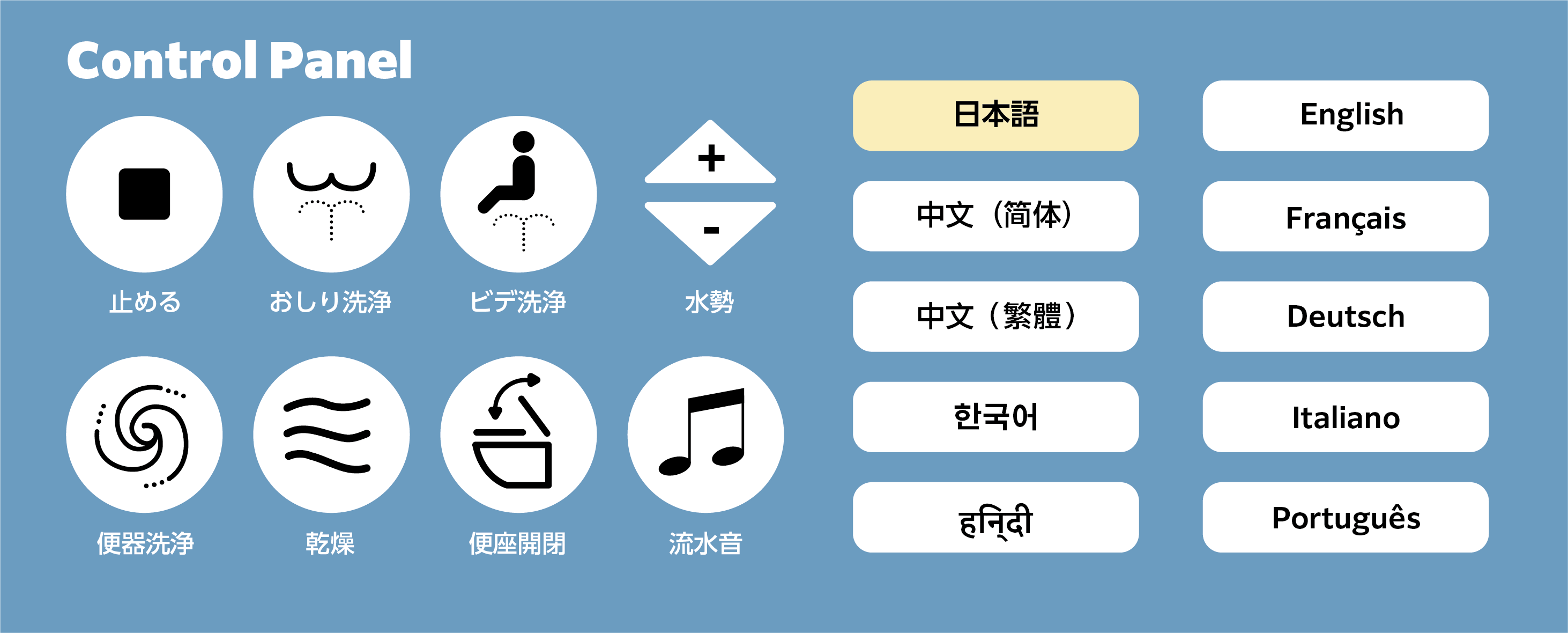
Increasing number of foreign visitors and residents in Japan, and multilingualization of products and services
Currently, with the increase in foreign visitors and residents in Japan, the number of products and services being made multilingual is rapidly increasing.
Compared to 10 years ago, the number of foreigners residing in Japan has increased by 1.7 times, and the number of foreigners visiting Japan has increased by 2.7 times.Problems faced by foreign visitors to JapanAmong the top concerns were "lack of multilingual signs/difficulty in understanding" and "communication with staff at facilities (not being able to speak English, etc.)," so it is clear that it is urgent for companies to make their products and services available in multiple languages.
As a font manufacturer, we at MorisawaResolving the challenges of product development for multilingualizationI will do it.


Challenges of multilingualization
There are several challenges in making products and services multilingual.
First, obtain a font that can display the relevant language. Foreign visitors to Japan come from a variety of countries, including Asia and Europe, and in order to accommodate each of their native languages, it is necessary to use fonts that support various languages, such as traditional Chinese, Arabic, and Cyrillic.You will need a font for the corresponding language..
Even if you can get fonts, each design is different.There is no consistency when using multiple languages or switching between display languages, it is also possible that this could happen.
These issues are important because they affect users' access to information and brand image.

Morisawa's global fonts solve the problem of multilingualization
Morisawa's global fonts are compatible with 151 languages, including Japanese, Simplified Chinese, Traditional Chinese, Hangul, European languages, other Indian languages (Devanagari), the Middle East (Arabic), and Thailand, and are designed with a common design concept, allowing you to make your products and services multilingual while maintaining a sense of unity.

Global Font Characteristics
A major feature of global fonts is that they can display characters with a consistent design in any language.
"UD Shin Go Simplified" and "UD Shin Go Hangul," which were designed based on "UD Shin Go," a representative Japanese Universal Design typeface, and "Clarimo UD," which was created using the same design concept as UD Shin Go, have high typeface affinity, and the image will not be lost even if the language setting in the UI of a product or service is switched from Japanese.

For more information about Morisawa's global fonts, please seeHere
Subsidies and grants to support multilingual projects
The increasing number of foreign visitors and residents in Japan has led to a growing demand for multilingual services, and systems for subsidies and grants have been established by the government, local governments, public interest foundations, and other organizations.
If you are considering measures to meet inbound demand or expanding overseas, we encourage you to take advantage of these systems and also consider using Morisawa's global fonts as the display language for your products and services.
Various subsidy programs
Agency for Cultural Affairs | FY2024 Cultural Property Multilingual Explanation Development Project
Japan Tourism Agency | Support project for the development of multilingual explanations of local tourism resources
Tokyo Convention & Visitors Bureau | Subsidy to Support Strengthening Inbound Tourism Capabilities
For those who want to try using fonts for free first
You can actually try it out by incorporating it into the devices or applications you are considering using.
Both outline and bitmap fonts are available.
For those who want to know more or request a quote
